Note from the Author: The enigmatic Kolbrin contains alongside its Celtic records six ancient Egyptian books, the remnants of scrolls written or copied by scribes from much earlier writings whose provenance has not yet been proven. Most people dismiss the books as forgeries. I am convinced that their core material is genuine.
Picture the god Osiris. He can be seen looking sideways on many ancient Egyptian tombs and temple walls, green-skinned and mummy-wrapped in white with a long plaited beard, a crook in one hand and a flail in the other, his head topped by a tall crown adorned with multi-coloured ostrich plumes.1
Left: Detail, Osiris and the Egyptian Resurrection. Wufei07 (CC0)
Center: Detail, The Gods of the Egyptians, E.A. Wallis Budge, 1904. Internet Archive Book Images, No restrictions
Right: Detail, frieze, tomb of Nefertari, royal wife of Ramesses the Great. mursal (CC0)
He looks – let’s face it – memorably bizarre, and the story of his death is as outlandish as his look. King Osiris, so the myth goes, was the son of Nut and Geb and married to the goddess Isis. When Isis’s jealous brother Set discovered that his wife Nephthys had conceived a child by Osiris, he decided to kill him. Seth found out Osiris’s measurements and had a beautifully-carved chest made to Osiris’s size; he invited guests to lie down in it to see if it fitted, and several guests tried unsuccessfully. When Osiris climbed in, Seth and his fellow-conspirators nailed down the lid, weighed the chest with lead and cast it into the Nile. Discovering that the coffin had drifted out to sea and washed ashore at Byblos in Phoenicia, Isis had it shipped back to Egypt. But hearing of this, Seth stole the coffin, chopped Osiris’s body into pieces and scattered them. Isis searched until she found nearly all the body parts, enabling Osiris to return to life and father a son, Horus who later took revenge on Set.

Isis as a bird conceiving Horus on the reconstructed body of Osiris, tomb of Djer, Cairo Museum.
Juan R. Lazaro, (CCBYSA3.0)
The Kolbrin contains no less than five different records of Osiris apparently written over a vast swathe of time. They pinpoint a period in pre-history when several species existed side by side on Earth, including the mighty offspring of godlike beings as well as hybrid species relegated long ago to the world of mythology.
What is currently known about Osiris?
‘Osiris’ is his original Egyptian name in Latinised Greek; in hieroglyphs, his name is spelt wsjr (no vowels) pronounced Asar, Ausar, Ausir, Wesir, Wizzer, Usir or Usire. Egyptologists think that Osiris might have been a historical ruler in the Nile Delta who came to be revered as a god, and that the struggle between his son Horus and his brother-in-law Set could have been inspired by regional conflict.
(Note: ‘Aigyptos’/’Egypt’ was the Greek name given to the land of Egypt from 305 BC on by its Ptolemaic rulers. This name is familiar to everyone and will be used throughout for prehistoric Egypt.)
Information about Osiris comes from a handful of sources:
- The Pyramid Texts. These opaque, almost impenetrable ritualistic writings are thought to date from an early time; even the ancient Egyptians of the later dynasties did not understand them fully.
– The Shabaka Stone. Its Twenty-fifth Dynasty inscription states that Memphis was where Osiris was first buried after his murder by Seth.
– The writings of ancient Greek authors who visited Egypt and spoke to Egyptian priests. Among them were Solon, Thales, Plato, Eudoxus and Pythagoras… ‘Eudoxus… they say, received lessons from Chonupheus of Memphis; Solon, from Sonchis of Sais; Pythagoras from Oenuphis of Heliopolis.’2 Other Greek writers include the historian Herodotus (6th century BC), Julius Firmicus Maternus (4th century BC) and Macrobius Ambrosius Theodosius, (fl. circa AD 400) – but above all, Plutarch and Diodorus Siculus.
Plutarch (46–circa 119 AD) – a Greek philosopher, historian and priest. In his book On the Worship of Isis and Osiris, he writes, ‘when Osiris reigned over the Egyptians he made them reform their destitute and bestial mode of living, showing them the art of cultivation, and giving them laws, and teaching them how to worship the gods. Afterwards, he travelled over the whole earth, civilizing it; far from requiring arms, he tamed mankind through persuasion and reasoning joined with songs of all kinds and music which he brought over; wherefore he is held by the Greeks to be the same with Bacchus.’ … ‘Abydos… or the little town Memphis, they say, is celebrated for possessing the only true body’… ‘Osiris and Isis passed from the rank of good dæmon to that of deities.’
Diodorus Siculus – a Greek historian writing between 60 and 30 BC. In his 40-volume Bibliotheca Historica (only fifteen of these survive intact) he says that the peace-loving Osiris (he identifies him with Dionysus) was reared in the city of Nysa, in Arabia Felix, that he encouraged mankind to give up cannibalism and adopt a gentle manner of life, taught agriculture and viticulture, instituted the harvest festival, loved music and dance, built dykes, encouraged copper and gold mining, founded Thebes and a number of cities in India, built temples with priests to take charge of them, and married his sister Isis.
The Egyptologist and philologist Sir E.A. Wallis Budge neatly summed up Plutarch’s and Diodorus Siculus’s writing in his two-volume Osiris and the Egyptian Resurrection, published in 1911. Wallis Budge had his own agenda: he was convinced that the religion of Osiris emerged from an indigenous African people and devoted much of his study to linking African tribal customs with Osiris’s achievements.3 The anthropologist James George Frazer incorporated some of Wallis Budge’s ideas into his influential 12-volume work The Golden Bough.
Since Wallis Budge’s books appeared in the early 20th century, several archaeological discoveries in Egypt have been linked with the cult of Osiris: the Osireion at Abydos in 1902-3, the Osiris Shaft at Giza in 1999, an Osiris-style tomb in Abydos in 2016. And yet little more is known about Osiris himself. The writer David Hatcher Childress proposes that a vast ‘Osirian civilisation’ once stretched across the Mediterranean basin and included megalithic structures such as the huge structural blocks at Baalbek in Lebanon, but he has not given a precise source for this claim, referring only to ‘esoteric tradition’.

Megalith in Baalbek Quarry, Lebanon
Lodo27 from Moscow, Russia, (CCBY-SA3.0)
The mysterious Lion of Kea, a hillside sculpture on the Cycladean island of Kea.
At a gigantic 9 metres/nearly 30 feet in length, is it way beyond our comfortable perception of a sculpted lion size?
Could it be much older?
Isolation versus legacy
On the question of Egypt’s origin, two theories battle it out. Mainstream isolationists insist it was indigenous pre-dynastic Egyptians who created the sophisticated stone buildings seen at Giza, Sakkara, Abydos and other sites; other researchers, notably the late John Anthony West and Dr Robert Schoch, contend that the Giza plateau’s Great Sphinx was carved thousands of years earlier as part of the legacy of a more advanced culture4. As John Anthony West put it, Egypt’s megaliths and temples are ‘like finding a Porsche where only a wheelbarrow should be’. In his book Before the Pharaohs: Egypt’s Mysterious Prehistory5, Edward Malkowski is equally scathing of the isolation view. ‘How’ he asks, ‘can they explain the agriculture, magnificent stonework, statues, temples, and other super-structures that rival today’s best engineering efforts? Perhaps if the Sphinx, the astronomically aligned megaliths of Nabta Playa, the granite and diorite bowls, vases, and plates in the Cairo Museum, and the expert evidence that the pyramids were constructed to produce electricity did not exist, the theoretical struggles over ancient Egyptian history would not either. But they do.’
The Kolbrin’s texts record that when Osiris arrived in the land of Egypt, he found its people enmeshed in barbarism and chaos, and slowly began to civilise the country; then a few survivors from inundated Poseida (a Mediterranean landmass, possibly the last gasp of the Atlantis empire, said to have existed where now the Greek Cyclades islands lie) settled in Egypt, introducing astronomy and building technology.6 The Kolbrin scribe Emod states, ‘It was the men of Zaidor [Poseida] who built the Great Guardian which ever watches, looking towards the awakening place of God.’ The ‘Great Guardian’ is almost certainly the Great Sphinx7.
A storehouse of strange energy
Did the men of Zaidor/Poseida also build the Pyramids? There is no mention of pyramids in the Kolbrin’s Egyptian books. However, there exists one enigmatic scrap ‘set forth in the scroll belonging to Kabitkant, son of Nemerath, copied from an old writing copied from another which was the property of a temple in Pinhamur’. It appears in the context of ‘strife most grievous’ in early dynastic Egypt, and it speaks of an upstart called Setshra who ‘believed the secret key to be his, the key that would open the inner chamber of Sacred Mysteries’. It reads: ’The twin powers drawn down entwined about themselves and grew ever stronger. Even as waters are dammed to be drawn upon, so was the united power built up into a reserve of force. A storehouse of strange energy was prepared.’ What does this mean? ‘Twin powers… a reserve of force… a storehouse of strange energy’ sound suspiciously like microwave radiation which, suggests the investigative engineer Christopher Dunn in The Giza Power Plant: Technologies of Ancient Egypt, the Great Pyramid once produced using harmonic resonance with the Earth.
The Kolbrin records
Comparing Kolbrin accounts with existing knowledge is tricky. The Kolbrin accounts include early detailed material unknown in the classic Osiris myth: if Kolbrin records are to be believed, then after his death Osiris must have been much-prettified, over-ritualised and transformed by centuries of deification. Wallis Budge was convinced this was what had happened: ‘Both Plutarch and Diodorus Siculus agree in assigning a divine origin to Osiris, and both state that he reigned in the form of a man upon the earth [but] … none of the classical writers had any exact knowledge of the meaning of the history of Osiris.… They were only acquainted with the face of the cult… which existed in the Ptolemaic period… a blending of numerous nature cults … [They] discarded no view or belief, however contradictory… The result …was to create in their religion a confusion which is practically unbounded, and we need not wonder that ancient Greek and Roman writers produced histories of Egyptian gods and goddesses which border on the ridiculous.’ It is worth bearing in mind that although the Kolbrin’s records are undated, the historical material in which they appear ends long before Plutarch and Diodorus Siculus were writing.
However differently their accounts read, ancient Greek writers and Kolbrin scribes describe Osiris as a supreme civiliser who brought Egypt laws, agriculture, waterways and a belief in the afterlife; from this, it is clear they were all writing about one and the same person.
The Kolbrin Osiris records are found in:
The Book of Gleanings
At the end of the story of Hurmanetar (the Gilgamesh story with different names) references are made to a land called ‘Okichia’ (almost certainly a skewed version of ‘Osichia), also called ‘the Twinlands of Light’. The scribe writes: ‘Ancheti [a young warrior friend of Hurmanetar/Gilgamesh] taught the mystery of metals in Okichia, a land of beer, bread and milk. He was renowned in the Twinlands of Light… The Book of Ancheti… contains laws for a people living in a land called Okichia who must have been less than barbarians, for he forbade such things as the eating of children newly born, the mixing and drying of their blood for eating in uniting brothers and the hanging up of women in travail. Also the cutting of a woman’s private parts and the deballing of men.’
From the description, this is clearly the land of Osiris recorded in the Kolbrin’s Egyptian books; the Okichia prohibitions outlined above can be found in Gleanings chapters 11-15 in the Teachings of Yosira, Rule of Yosira, Way of Yosira and Tribulations of Yosira. In these chapters, Osiris is called ‘Yosira’. At first glance, they read as endless lists of thou-shalt-nots, but behind them can be glimpsed the wretched conditions and weird beliefs of the people Osiris found when he arrived in Egypt.8 The fact that the scribe refers to the inhabitants of Okichia as ‘less than barbarians’ indicates that whatever climatic catastrophe reduced the Egyptians to savagery, other cultures were not as badly affected or else they recovered more quickly.
The Book of Scrolls
The Scroll of Herakat describes Osiris’s arrival in Egypt and the lost land of Ramakui from which he came.9
The Book of Manuscripts
- The Scroll of Emod records Ramakui as Osiris’s motherland and the cataclysm that destroyed it, the coming of Osiris to Egypt and the arrival of refugees from Zaidor/Poseida. Emod describes the appalling state of the human race after the catastrophe. The paean of praise that follows enumerates the skills taught by Osiris the Great One, the items he brought with him and how his body was dealt with after his death.10
- The Scroll of Kamushahre records Osiris’s accomplishments in Egypt.11
- Annexed Scroll 1 considers whether Osiris (he is called ‘Osireh’/’Osire’ in this account) was man or god.12 It tells where he came from, how he met his wife and how he died,13 with an account of his son.14
Osiris’s titles
The many names given to Osiris in the Egyptian books indicate just how much he was revered and loved. First and most picturesque is ‘the Old Bald-Headed One, he whose name is not spoken’. Other honorifics include ‘the Great One’, ‘the Golden One’, ‘Lightbearer’, ‘Son of the Sun’, ‘Servant of the Sun’, ‘Son of Hem, Son of the Sun, Chief of the Guardians of Mysteries, Master of Rites and the Spoken Word, Judge of Disputes, Advocate of the Dead, Interpreter of the Gods and Father of Fishermen’, and ‘one filled with the Spirit of God, the first Viceregent of God on Earth’. Above all, he is described as leader of ‘the People of the Light’.
On the wall of Edfu Temple in Egypt are obscure inscriptions referring to an island civilisation that was destroyed, and in this text, ‘Harakhte’/’Re-Horakhty’ is a recurring name. It matches a name given to Osiris in the Kolbrin: ’Harekta’. The Kolbrin speaks of ‘the squalid manner in which men dwelt before the Golden One led his people hence… in the days before Harekta came.’ Osiris’s ‘Harekta’ name links him to the lost island civilisation.15
Where did Osiris come from?
The Kolbrin says: ‘From Ramakui of the seven cities, Land of Copper, came the People of the Light… Led by the Old Bald-Headed One, he whose name is not spoken, they came out of the West at the sunsetting… They came from the place where now the sun goes down; in the days when the Western wilderness was green and sand had not replaced the waters; when the outlands nourished cattle and sheep fed where now there is nought but rock and stone.’
So Ramakui was the lost civilisation from which Osiris came.16 The second part needs a bit of unpicking:
‘When the Western wilderness was green and sand had not replaced the waters’. Around 10,500 years ago monsoon rains transformed the Sahara desert into fertile land; as a result, people were able to live there and keep livestock, but 3,000 years later desiccation began and by 5,500 BC the Western Desert was uninhabitable once more and settlers moved to the Nile Valley.17 Osiris and his people probably arrived during this fertile window of time.
‘Where now the sun goes down’. A Kolbrin scribe writes elsewhere: ‘My land is old, a hundred and twenty generations have passed through it since Osireh brought light to men. Four times the stars have moved to new positions and twice the sun has changed the direction of his journey.’’18 In other words, Egypt had experienced two pole shifts. The Book of Manuscripts speaks of a time when ‘The Earth turned over, as clay spun upon a potter’s wheel.’19
The Kolbrin also says: ‘Yosira… came with seven strangers from a land far East of the Sea of Death [the Dead Sea?], a land not as old as Egypt but long since dead and forgotten.20
Arrival in Egypt
The Kolbrin records that ‘The High Priest survived with seven others who were priests. He brought these, together with one hundred and ten men and their wives and children, into Labeth … a land among high cliffs at the edge of the Wide Plain.’…’Osireh… gathered his sons together on the stones beneath the place called Homtree and spoke to them… “You are the few chosen ones, my sons, light of my light, who shall hand the light on down through the generations.”’
‘Before crossing into Tamuera Yosira chose captains to be over the fighting men, and they sent forth men to spy out the land. He also sent some from among his sons into the land of Tewar, that they might talk with the people there, and these came back bringing hostages from the governors of the land of Tewar.’
So Osiris not only travelled with priests, wives and children, captains and fighting men, he also used spies and took hostages.
Where was Tamerua? The late Livio Catullo Stecchini, Professor in Ancient History at what is now William Paterson University, New Jersey, USA21 maintained that the original name ancient Egyptians used for their country was ‘To-Mera’ – ‘the land that was measured’. Where was Tewar? Papyrus Salt 82522 states that Osiris was living in Tawer, also known as ‘the Great Land’ – the nome or traditional district that became his cult centre of Abydos – at the time of his death.
What did the Great One look like?
Forget for a moment the stylised white elfin figure of Osirian myth. The Kolbrin and an inscription at the Temple of Dendera in Egypt give a different picture.
‘The great land of Ramakui first felt his [humankind’s] step,’ says the Book of Manuscripts, and it adds, ‘There were mighty men in those days.’ This term ‘mighty men’ first appears in the Book of Gleanings when the Children of God (an artificial species engineered from advanced DNA and ape genes) mated with the daughters of the Children of Men, producing sons who were ‘wonderfully big and mighty fighting men’. The Book of Gleanings contains a version of the Gilgamesh story with references to mighty men and mighty deeds, but after that, we hear no more of them.
Elsewhere the Kolbrin says, ‘In the early days Egypt was bounded in the West by the green bitter waters [sea]… Out here was the city of Merow from whence came the mighty men who smote the giants in the days of yore’. Where was Merow? From the 6th century BC for nearly a thousand years, Merow/Meroë flourished as the powerful trading city of Kush; its now-desecrated pyramid tombs can still be seen alongside more ancient ruins near the east bank of the Nile in Sudan.
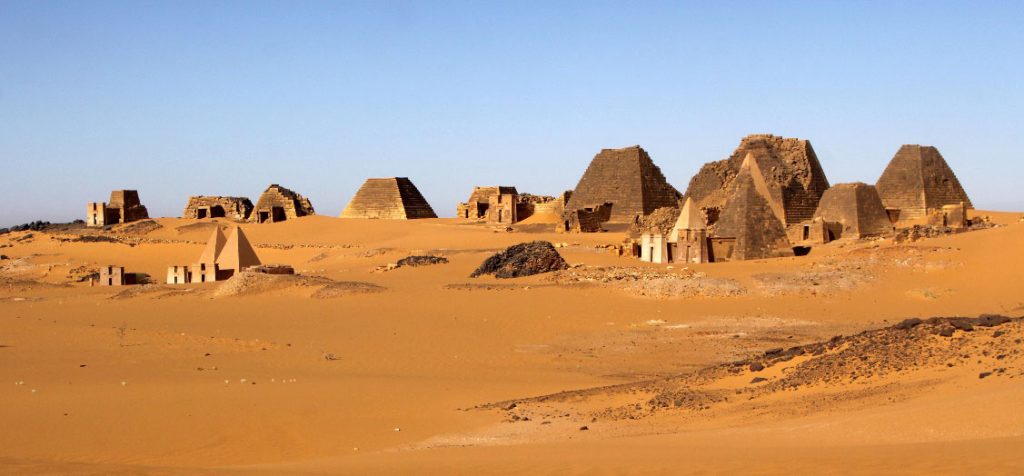
The Meroe Pyramids, Sudan
Retlaw Snellac, CCBY2.0)
The text makes clear that ‘mighty men’ and ‘giants’ were two different species. Why does the Kolbrin scribe mention mighty men defeating giants in this lip-smacking way – as if to say, yes, we all know this old story? It appears to have been a supremely memorable event, pre-historically speaking. Could this have been the legendary ‘Gigantomachy’/’Titanomachy’ which the ancient Greeks mythologised as the Clash of the Titans and the Battle of the Giants? Quite a thought.
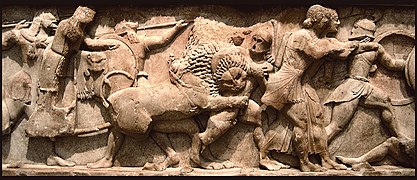
Frieze, Gigantomachy/Battle of the Giants from the Siphnian Treasury, c. 525 BC, Archaeological Museum of Delphi, Greece.
Ricardo André Frantz, (CCBYSA3.0)
Which leads to Osiris the Great One. Was he ‘great’ in the metaphorical sense that Alexander was Great? Was he a ‘mighty man’? Or was he something else? We know Osiris was physically unusual because the Book of Manuscripts says, ‘He died in the manner of men, though his likeness is that of a god… His bones they did not paint red, for they were not as those of others.’ What was it that gave Osiris the likeness of a god? What made his bones different?
When August Mariette excavated the Temple of Dendara in the mid-19th century, he found at the back of the temple a brief account of Osiris, ‘qui est apparu en roi sur le trône de son père… Huit coudées, six palmes, trois doigts’. This translates as: ‘who emerged as king on the throne of his father… Eight cubits, six palms, three fingers’.23 A Hebrew cubit was 18 inches/45.72 cms, a Royal Egyptian cubit was 20 inches/50.8 cms. So according to the Dendara inscription, Osiris measured 4.6 metres – well over 15 feet tall.
Is this to be believed? The Egyptologist Bernard Mathieu is far from dismissive, In his online article ‘When Osiris Ruled on Earth’2425, he points out:
- The Egyptian priest Manetho who wrote Aegyptiaca, a chronological King List of ancient Egyptian kings, gives the height of Sesokhris, the next-to-last king of Egypt’s Second Dynasty, as ‘five cubits and three palms’ – 2.84 metres/8½ feet. Sesokhris ruled in the second dynasty, whose rulers were described as ‘demi-gods’. (Osiris was the fifth ruler of the first dynasty – much earlier – whose rulers were described as ‘gods’.)
- Later in his King List, Manetho gives the height of King Sesostris of the Twelfth Dynasty: ‘They say he was four cubits, three palms, and two fingers’ – 2.2 metres/7 feet 2 inches.
- the Papyrus Westcar sets out the size of each of three kings at birth: ‘a child of one cubit, with strong bones’. https://rhbarnhart.net/Westcar_trans_web.html.
From this, it is apparent that pharaohs’ physical heights were being monitored. Diodorus Siculus notes that Manetho scrupulously recorded the adult size of successive kings. Osiris’s height was recorded for posterity at Dendara because it was utterly remarkable; Sesokris’s and Sesotris’s heights were included by Manetho because they, too, were remarkable in their times. Mathieu points out that the Osiris myth itself boosts the evidence for Osiris’s great size: in the story, Seth takes a careful note of Osiris’s exact size before he has a chest made – which implies that Osiris’s height was far different from that of the other divinities invited to try the chest for size.
Mathieu thinks this poses a crucial question: does Manetho’s King List make it possible to trace a progressive reduction in height from the first ‘divine’ generations which included Osiris down to the human pharaohs? If so, he thinks that the gradual shortening in height would correlate with the gradual shortening in the length of their reigns, which in turn would imply that lifespans gradually shortened. Mathieu suggests that if the fragmentary Turin King List were complete, it would illustrate this gradual diminution in height and length of lifespan down the reigns of the early pharaohs. He notes that the ‘Dynasty of the gods’ was stated to have sprawled over 11,985 years, with Ptah (Hephaistos) reigning 9,000 years, Re (Helios) 992 years, Shu (Agathodaimon) 700 years, Geb (Cronos) 501 years, Osiris and Isis 433 years, and Seth (Typhon) 359 years.26 And an Egyptian tradition, originating in the city of Xois in Lower Egypt, attributes a reign of 7,000 years to Amon the creator god.27
Why would the Egyptians be so interested in the diminishing heights and lifespans of their pharaohs? In the Kolbrin – and nowhere else, to my knowledge – it states that ‘the years of man’s life were lessened because he became fully Earth-sustained’.28 For more on what ‘Earth-sustained’ means, see my article ’Where We Humans Come From’.29
In terms of his lifespan and physical height, Osiris could have been a ‘mighty man’ but could have been more. He was more than a ‘demi-god’. Bearing in mind that the word ‘temple’ originally meant ‘the dwelling of a deity’, it is no wonder that Egyptian temples were traditionally built so big, and that ‘Osirian’ fast became a byword for supersized structures. The Kolbrin says: ‘The people of Tewar built a habitation for Yosira and a temple of brick bound with reeds. There were skins upon the walls and on the floor, and the doors were of wood… He remained among the people of Tamerua during the days of Gabu, dwelling at the place where now stands the Temple of the Skyseer, in an abode of reeds, by the moving waters.’ The ancient Egyptians believed that Osiris’s son Horus was closely associated with the sky and heavens, so ‘the Temple of the Skyseer’ might have been the much earlier temple known to have existed where the present Temple of Edfu, dedicated to Horus, now stands; or it might have been the Temple of Hat-hor at Dendara which is also thought to be built on a much older site.*
This begs the question: were Osiris’s fellow priests and 110 followers who accompanied him into Egypt also big beings – bigger than the people they settled among? Alas, the Kolbrin does not tell us. But further evidence for the existence of mighty men could be tucked away in the Cairo Museum. In Before the Pharaohs: Egypt’s Mysterious Prehistory, Edward Malkowski notes that in 1992 the Egyptologist Stephen Mehler was taken by the late Abd’El Hakim Awyan, a wisdom-keeper and collector of indigenous oral traditions, to a room in Cairo Museum where a number of coffins were stored. What made these coffins unusual was that they were 10-15 fifteen feet tall and carved in anthropoid style. Hakim claimed they had been found with bodies inside, but when Mehler asked where the bodies were, the answer came that – as with all giant-sized remains in an age which firmly relegates giants to mythology – no one knows.30
King Gilgamesh, who according to the Kolbrin preceded Osiris chronologically, is described thus: ‘Eleven cubits was his height,/Four cubits his chest, from nipple to nipple’.31
In relation to these extraordinary heights, could the gigantic relic of Bir Hooker possibly be genuine – see https://gregorspoerri.com/info/the-relic-of-bir-hooker-the-discovery/?lang=en?
The researcher and writer Freddy Silva takes the long view: ‘I do believe that we adapt as a species and I think that adaptation is happening as we speak right now… How are humans going to look fifty, a hundred, a thousand years from now? I bet they will look much different… There was a time when Neanderthals were relative to the Earth, there was a time when 15-foot people were relative to the Earth, and the time of Homo Sapiens also came along.’ 32
Dating Osiris’s arrival in Egypt
Dating mythical times is a minefield. The Kolbrin scribe Adepha, writing at some time around the 19th Dynasty (1292-1189 BC), says: ‘a hundred and twenty generations have passed through it [Egypt] since Osireh brought light to men.’ Using the Kolbrin’s lifespan measure during the Gilgamesh period as 70 years for a generation, this would suggest Osiris arrived in Egypt circa 9692-9589 BC. But ancient writers including Herodotus, Manetho, Berossus, Sanchunaithon, Simplicius of Cilicia, Diogenes Laertius, not to mention the Turin Papyrus and the Palermo Stone, state that the Egyptian civilisation was much, much older than these dates indicate.
The Old Bald-Headed One
‘Old’ and ‘bald’ side by side bring to mind a decrepit elderly gentleman bald as a coot – and it is hard to imagine Osiris achieving all he did as an old man. But we are talking about what might have been a different species here. ‘Old’ might mean that Osiris was old in years without necessarily being an old man. A famous mythological tale engraved on the walls of the temple of Edfu mentions ‘the year 363 of His Majesty the King of Upper and Lower Egypt Re-Horakhty’,33 suggesting a totally different lifespan from our own.
Could ‘bald’ mean simply that Osiris shaved his head at a time when everyone else was hirsute? The Greek historian Herodotus, visiting Egypt in the 6th century BC, noted that Egyptian priests shaved themselves all over every other day as part of a ritual cleansing. Plutarch wrote, ‘The priests cut off their hair.’ This might have been a tradition handed down from the time of Osiris.
The Golden One
Why was Osiris called ‘the Golden One’? The Papyrus Westcar 303334 tells how the sun god Ra orders his companions Isis, Meskhenet, Hekhet, Nephthys, and Khnum to help a woman called Rededjet with the difficult birth of triplets, to ensure a new dynasty of rulers. The three babies who emerge all have limbs with ‘the golden appearance of a newborn king’, suggesting that the earliest dynasty of ‘gods’ came from a race different from those they ruled. https://rhbarnhart.net/Westcar_trans_web.html. The Kolbrin states that ‘The family of Pharaoh were… a race apart’.’35
How Osiris dressed
The metaphysical Kolbrin does not waste words on physical appearance. So it is noteworthy that Osiris and his fellow priests are described in detail. ‘In the Land of Copper [Ramakui], which was the Land of the Golden Light, one man in twelve was a priest…. The headdresses of the priests were red and they wore feathers and cloaks of black. They had circlets of gold and beads of silver, and there was a spiral of black stones at their waist.’ The Book of Manuscripts tells how ‘From the West, from beyond Mandi, came the Great One arrayed in robes of black linen and wearing a head-dress of red.’ Same black linen cloaks and robes, same red headdresses: these were surely the same variety of priests.
Ancient Egypt was renowned for its linen – it is the world’s strongest natural fibre and dyed flax has been dated back 30,000 years. But the earliest dyes were made from natural bark, roots and walnuts, and cloth needed dyeing several times to darken it, sometimes with iron oxide filings to give a deeper black – so wearing black linen indicates sophistication. Plutarch mentions that 6th-century BC Egyptian priests wore linen so perhaps, like all-over shaving, linen-wearing became a tradition after the time of Osiris.
On the other side of the world, another superhuman refugee wore black linen. The legendary figure Quetzalcoatl revered by the Mayas and Aztecs led a body of men who entered Mexico ‘dressed in long robes and black linen cut low at the neck, with short sleeves…’36 Quetzalcoatl is also described as wearing plumes, and, like Osiris, was once revered as the patron of priests, the protector of craftsmen, the inventor of the calendar and the symbol of resurrection. Did Quetzalcoatl also come from the ranks of the god-priests of Ramakui?
The photos below suggest how Osiris might have looked.

Coptic priest, 1918
Paul Dittrich, (CCBYSA2.5)
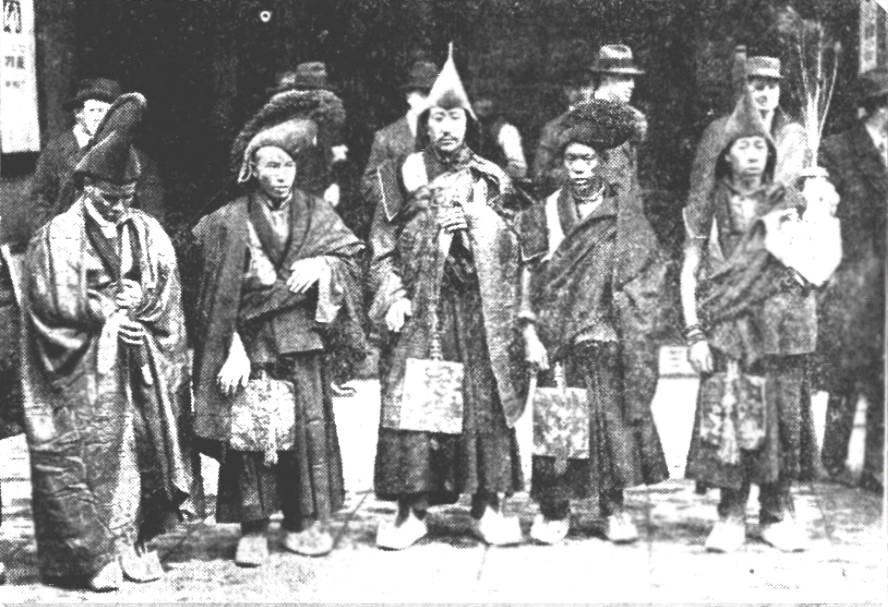
Tibetan monks, 1924. L.N.A., (Public domain)

Hawaiian headdress. Mike Peel (CCBYSA4.0)

Headdress of Moctezuma I, Museo Nacional de Antropología e Historia, México (modern reproduction). Thomas Ledl, CCBYSA4.0)

Diadem of Princess Sit-Hathor Yunet, daughter of Senusret II, Cairo Museum.
Hans Ollermann, (CC BY 2.0)
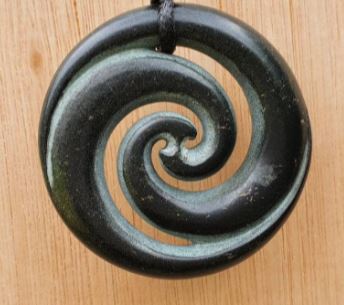
Black stone spiral pendant. Courtesy of Nagarajan Ramachandran at Carved-in-Stones, Camden Lock Market, London, NW1 8AF, Etsy.com

Silver cylinder beads, c. 1479-58 BC, Dynasty 18, Metropolitan Museum of Art, CC0
The powers of Osiris
The Kolbrin records reveal that Osiris had superhuman powers and profound wisdom. He was a pragmatist and a master of psychology. He is called ‘the Lightbearer’, and the Book of the Bearers of Light (now lost) is referred to four times as the official record of Osiris and Horus.
‘Who brought the Sacred Eye from the distant land and the Stone of Light made of water, by which men see God, and the firestone which gathers the light of the sun before the Great Shrine?’ writes a Kolbrin scribe in the Book of Manuscripts. These three mysterious objects seem to have performed remarkable functions. Elsewhere it says, ‘the People of the Light… brought with them, out of their transparent temples, the light that shines, when darkness falls, without being lit.’ This sounds remarkably like stored solar energy and so was probably ‘the firestone which gathers the light of the sun before the Great Shrine…’
In his video Origins of Osiris Uncovered at Sacred Temple,37 the author and TV presenter William Henry points out at the Temple of Seti in Abydos ‘the head or tower of Osiris – what looks like some kind of ancient antenna type of a device. It’s clearly technological or mechanical looking. According to legend, it has been buried and is awaiting rediscovery.’ This could well have been one of Osiris’s mysterious objects.
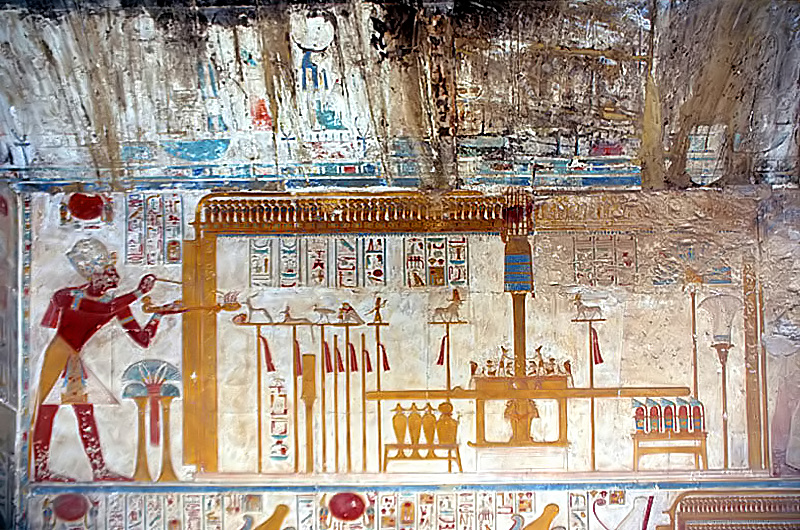
‘King censing before shrine containing Osiris emblem, Temple of Seti I, Abydos, Egypt’ by Roland Unger (CCBYSA3.0)
Sound Eye – Sacred Eye
Much of the obscure text at Edfu Temple in Upper Egypt describing a lost island civilisation has been heroically translated by the late E.A.E. Reymond.38 Her text refers to a mysterious object called the ‘Sound Eye’: ‘Both of the early domains were destroyed and … the Sound Eye fell… The Sound Eye might… have been the name of the centre of the light which caused the fall of the Sound Eye, with the result that complete darkness fell…’ From this, it sounds as if the Sound Eye illuminated a vast area that had been thrown into darkness, perhaps by a major event such as the Toba supervolcanic eruption in Sumatra 74,000 years ago.39 The Sound Eye sounds far bigger than the device pictured at Abydos, but until such time as the Abydos device is rediscovered, its function remains an enigma.
The Djed pillar
This strange Osirian cult object, known as the ‘backbone’ of Osiris, bears little resemblance to the three items described in the Kolbrin. What was it? The writer R.T. Rundle Clark writes: ‘The idea of the Djed Column is that it stands firmly upright… When the Djed is upright it implies that life will go on in the world.’40 Long after Osiris’s time, ‘Raising the Djed’ was part of the Sed jubilee festival celebrations when the pharaoh and priests raised a wooden Djed column using ropes. Back in the land of Ramukui, could the Djed pillar have carried energy? Its iconic shape bears more than a passing resemblance to a modern electric pylon. And Reymond’s Edfu text translation includes mentions of a pillar connected with the ‘territory of the circuit’… ‘power which dispelled the darkness and brought out the light again’… ‘the meadow [which] grew radiant’… ‘the water [which] grew radiant’ – suggesting that powerful technology was involved.
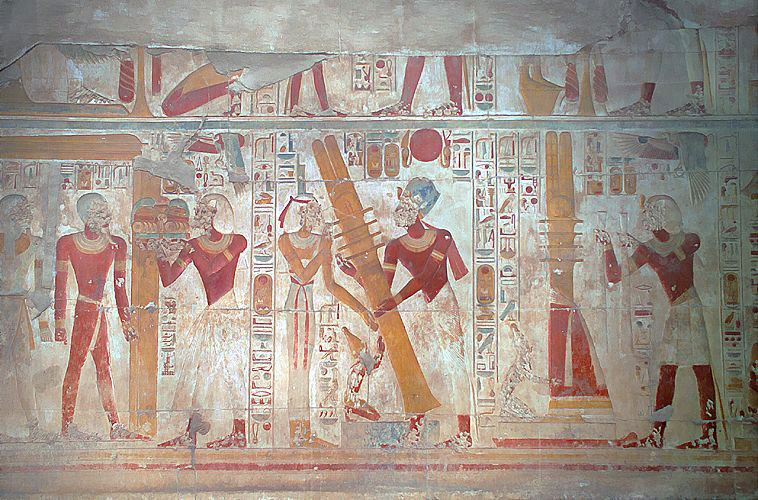
Raising of the Djed pillar, Osiris Chapel, Temple of Seti I, Abydos, Egypt
Jon Bodsworth, (CC0)
The world in chaos
The Kolbrin states that Osiris’s homeland of Ramakui had been completely destroyed before he came to Egypt. ‘The pillars of the Netherworld were unstable [Earthquakes?]. In a great night of destruction, the land fell into an abyss and was lost forever. When the Earth became light, next day, man saw man driven to madness. All was gone. Men clothed themselves with the skins of beasts and were eaten by wild beasts, things with clashing teeth used them for food. A great horde of rats devoured everything, so that man died of hunger. The Braineaters hunted men down and slew them.’41
The Kolbrin then describes the post-cataclysmic land of Egypt: ‘Children wandered the plainland like the wild beasts, for men and women became stricken with a sickness that passed over the children. An issue covered their bodies which swelled up and burst, while flame consumed their bellies. Every man who had an issue of seed within him and every woman who had a flow of blood died. The children grew up without instruction, and having no knowledge turned to strange ways and beliefs. They became divided according to their tongues.’
‘[Egypt is now] a pleasant place with many great cities and contented villages; there is the great broad river of freshwater which rises and falls in its due seasons. Channels there are and waterways which lead the fertilising waters unto the growing things, the herbage and the trees. There are flocks of sheep and herds of cattle on the green pastures.
‘It was not ever thus. In the days before Harekta [Osiris] came all was barren and desolate. Nought divided the wilderness from the swamplands filled with reeds. Then there were no cattle or sheep and the land knew not the hand of man, it lay untilled and unwatered. No land was sown, for they who dwelt in it knew not the making of waterways, nor did they know how to command the water and make it flow at their behest. There were no cities and men dwelt in holes in the ground or in places where the rock was cleft. They walked in their nakedness or clothed themselves with leaves or bark, while at night they covered themselves with the skin of wild beasts. They fought with the jackal for food and snatched dead things from the lion. They pulled roots from out of the ground and sought for sustenance among things that grew in the mud. They had none to rule over them, nor had they leaders to guide… They were divided among themselves into many kindreds, and strife was frequent.’
False priests and dark arts
The Kolbrin goes on to describe the problems Osiris had to contend with:
‘When first he [Osiris] brightened this land by his presence, the welfare of its people was in the hands of false priests who taught that man was a double-spirited being in whom the Spirit of Good struggled with the Spirit of Evil for possession of his soul’… ’There were many charmers who ruled the people by delusions…‘
Surprisingly, Osiris ‘did not curse the charmers… instead he… gave them dominion over the Dark Spirits which left their abode to wander Earth, molesting men in their habitation. Thus the charmers became greater in the eyes of the people, and from that day onward they have cleansed the land of all Dark Spirits.
‘Yosira forbade those who sat in judgement the right to judge men by the fat of crocodiles or by the horn or skin… by drawing the likeness of another in sand and piercing it with a fire-hardened stick…’
‘When the charmers seized men at night they took them to a secret place where their tongues were pierced well back with thin thorns. Thus the tongue swelled up, so they whose tongues were so pierced lost the power of speech. The charmers also pierced the victims about the waist with slivers of wood, so none could discover where they were inserted. They drove other splinters into them at the bridge between the private parts and the rear channel, and none could discover them there and know the victim was pierced with thorns and splinters. Yosira cursed all the charmers who practised this evil with a great curse, so they were driven to madness by a demon which ate away their bellies.’
‘Yosira laid the greatest of all curses upon those who captured and enslaved the Lord of the Body belonging to another. Since that day none has done so and lived.’
‘In those days men sought to appease the Formless Ones and the Spirits of the Night with offerings and worship. But Yosira forbade them this and he surrounded the whole land with a protective wall which no Dark Spirit could penetrate, while all those within were dissolved.’
Abd’El Hakim Awyan stated that the land of Osiris was traditionally known as Bu Wizzer, and that Osiris was called Wizzer (WZR).42 From ‘Wizzer’ comes our word ‘wizard’. Dark connotations still linger around the term ‘wizard’. Was Osiris a wizard? The original meaning of ‘wizard’ is ‘philosopher, sage, wise man’, so indeed he was. Osiris and his priests had astonishing powers: they could even ‘make their [own] soul depart from the body at their command and return as they willed’.
Cannibalism
The Kolbrin explains that savage customs developed because the adults had all died of disease and a generation of children grew up without parents to guide them (psychological shades of William Golding’s Lord of the Flies).
Osiris passed laws against drinking babies’ blood and burying infants alive: ‘The sacrifice of breast children at the burial of the dead shall be forbidden, for the blood of the young cannot provide life for the old, each man being the fashioner of his own destiny… He who buries a living breast child with the dead shall himself die.’
He ‘laid a curse upon women who baked their newborn children and ate them because of the barrenness of the land… Yosira had these things recorded in Yapu: ‘No child shall be slain wilfully.’
The following practice, splitting the body of a female child, is difficult to follow, but it seems to have been a grisly method by which people attempted to contact the dead: ‘In those days the people of Earth united themselves with those who were in the land of Morning Light [i.e. their dead loved ones] by the powers within the body of a womanchild, seeking in this manner to preserve the hokew [see below] of their kindred. When Yosira saw the wickedness of the custom he placed a great curse upon all the land and upon those who split the body of a womanchild, so that her flesh cried out from within them. Therefore, the land became stricken with a great plague. Since then never has anyone in the enlightened lands eaten the flesh of man or woman.’
Osiris’s measures met with resistance. ‘…When Yosira cried out against those who… allowed a child to be slain as sacrifice, or buried beneath the pillars they raised up, he was condemned as an enemy of the gods.’
Human sacrifice
‘When Yosira came to Kambusis he found there a man of the Hestabwis bound and prepared for sacrifice, and he cried out against the deed but none gave ear to his word. So, standing off, Yosira placed a staff of power upright into the ground and danced around it, singing the song for drawing forth the spirit. When they saw this, the people were wroth against him and called upon their charmers to curse him so he departed from the Earth. Their curses were ineffective and when one charmer approached the dance ring of Yosira, Yosira called forth a tongue of flame which consumed the charmer. Then the people became afraid and fled. So Yosira released the man who was bound upon the place of sacrifice, but he was not yet whole… since that day no man… was ever slain upon the altars.’
This is the only instance the Kolbrin gives of Osiris dancing. Osiris could draw a human spirit out of its body – that is, induce catalepsy or trance. This is mentioned several times, so he must have demonstrated his remarkable ability on many occasions. The text also says that he ‘departed from the Earth’ – that is, he could become invisible, do a disappearing act.
Hokew
Like several other words in the Kolbrin this mysterious term, which appears throughout the early accounts of Osiris, has never been translated because nobody knows what it means. R.T. Rundle Clark writes that the ancient Egyptians believed in a ‘vital essence’ – Hike – which had been brought to their land. The Kolbrin says:
‘Until Yosira came none in this land knew of hokew, and it filled men with fear and awe, but Yosira revealed all its secrets to his sons, and the secrets are known even in these days. Hokew is that which sustains the Dawndwellers.43 It is but thinly spread throughout the Earth and before the days of Yosira men could gather it, storing it in stones and in sacred objects. It may be drawn upon by the spirits of men, as women draw water from a well. It is hokew which bestows fertility, causing flocks to multiply and crops to increase. Its secrets are known by the Twice Born…’

Could the figures shown in Assyrian reliefs be collecting hokew from trees?
Relief, northwest palace of King Assurnasirpal II, 883-859 BC. Gryffindor, (CC0)
Hokew was regarded as vital to human life. ‘Yosira taught the people that the power of hokew resided not in the flesh of the body but in the bones, and that each bone contained the essence of all the being, man and woman.’… ‘Sacred waters are living waters filled with the power of hokew and shall no longer be used for any purpose other than sanctification and purification’… ‘the bodies of the dead shall not be broken or burnt, for the hokew within them departs with the Lord of the Body.’ … ‘That hokew which comes from a man whose crops and trees yield abundantly is best.’
Lukim
Another strange term. The Kolbrin speaks of ‘the lukim of sickness and pain’ and ‘the lukim of impotency’… ‘That which comes from Heaven, whether influencing for good or evil, comes forth as shades in the likeness of men; or much more often as lukim, which are like unto motes [specks/particles]. It may also come as waves of air, but not air such as we breathe and feel. It is something altogether different in nature’… ‘Among the lukim none is more subtle than the nableh44 [bacteria?] which seek sustenance among the food of men. Therefore… if there be meat or fish, then it shall be suspended within the dwelling. If you have bran or meal which has been pounded, then it shall be kept in a capped container with nowrata flowers, thus the lukim will not come upon it.’
‘The foreskin of a man is cut to defy the lukim of impotency… the people…shall not preserve the foreskin in fat and use it to endow stones with hokew’… ‘Adultery is a foul and evil thing which you shall abhor, for it permits the lukim to pollute the fountain of life.’
Domestic living
According to the Kolbrin, before Osiris arrived households did not exist. ‘Men and women dwelt apart, men going into women of their choice. But the women kept to the fires while men roamed about… Osireh drew them together and taught them the laws of marriage, but still, he let men and women dwell apart if they so willed, though now no man lay with a woman that was not his wife.’
A single other source exists for this extraordinary fact. Edgar Cayce, the 20th century’s ‘Sleeping Prophet’, says in his readings, ‘Although there were clans and tribes, there were no family households. By state law, all the women of a tribe were housed at night in a separate temple of their own, with the males residing outside… The relations for the propagation of the race, while considered sacred, were consummated in special temples set aside for this purpose…’45
Osiris ‘showed them, man and woman, how to dwell together in contentment as husband and wife, and he divided their tasks between them… When they become of an age to do so every man and woman should take themselves a mate.’ Osiris prohibited first-degree incest and adultery, introducing severe penalties.
Women
Horrific practices existed in the lives of women. The worst of these was female genital mutilation. The Kolbrin records that early on in human history, artificially-engineered females of the Children of God mated with at least two varieties of primitive hominids, thus altering the DNA of their species and shortening their lifespan, destroying access to another dimension and introducing many diseases to their offspring. Human beings bitterly regretted this genetic ‘fall’46 and female genital mutilation was probably devised as a crude means of preventing further mismatings – until Osiris ruled against it. ‘Henceforth, the private parts of young women shall not be sewn up to preserve their maidenhood… To sew or cut the private parts of any woman is a great wickedness, for this is the portal of life and woman is not an unworthy guardian.’
The 2014 Egypt Health Issues Survey states that 87.2% of Egyptian girls and women aged 15-49 are still ‘cut’. Those who would perpetuate female genital mutilation maintain the practice has always been performed in Egypt – but Salima Ikram, Professor of Egyptology at the American University in Cairo, has examined many female mummies and says, ‘This [FGM] was not common practice in ancient Egypt. There is no physical evidence in mummies, neither is there anything in the art or literature. It probably originated in sub-Saharan Africa, and was adopted here later on.’47 So it was thanks to Osiris that the practice was stopped for some time – and no thanks to enduring superstition that female genital mutilation continues to this day.
Osiris passed laws against female tethering, confinement and torture: ‘Henceforth, no maiden shall be enclosed in bark and kept in darkness for seven days before marriage, but she may be kept in seclusion among women. If she has to be purified, it must be done with water and not with fire. A woman shall never be mutilated to purge her wickedness’.
‘The custom… whereby the legs of young women are bound together, after which young men may enter their chamber to lie with them, is a thing of wickedness and no longer permitted. Now, if any man discover the nakedness of a maiden, he shall not go unpunished.’
‘Henceforth, no woman shall be suspended at childbirth.’
Osiris also devised laws against male practices such as men deballing themselves, carrying on blood feuds, and having sex with ‘the likeness of any beast’ to increase their success while out hunting.
Hybrids
The Teachings of Yosira include this startling declaration:
‘All men who were blood kindred with the beasts of the forest or with fowl or with serpent, dwelt together according to their kinship, and were divided thereby. Yosira forbade them not their kinship but did forbid the rule of blood. He spoke to the people in this manner: “Great are the ties of that thing which binds men together and joins them with their forefathers, but greater still is each man in himself, his destiny lying within himself alone and not within his kindred. Man is not a drop of water in the stream of life, but a fish that swims within the stream. Yet insofar as these things have ever been, the twenty-four great kinships shall remain secured in their establishment”.’
Men who were blood kindred with beasts and fowl and serpents? What was going on here? Later the Kolbrin says that Osiris’s right-hand man ‘slew a man who was kindred to the Leopard. This enraged the god of these people’, and Yosira had a hard time making peace with the Leopard men.

Lion-headed man with eagle’s feet, Uglallu. Nineveh, Iraq, 700-692 BC.
Osama Shukir Muhammed Amin, (CCBYSA4.0)
The Kolbrin mentions ‘beasts of the forest’ elsewhere.48 But Osiris was referring to birds and reptiles too. Hybrids such as these are commonly thought to exist only in mythology – ‘therianthropy’49 is the term used to describe animal transformations such as those in Ovid’s Metamorphoses.50 Osiris, however, was not talking fiction.
Other sources back up what the Kolbrin says. Edgar Cayce’s readings describe strange creatures called ‘the mixtures’ who accompanied migrants into Egypt: ‘Some of the people… as in other countries, were mixtures at varying stages of development. Large numbers were mentally, spiritually and physically inferior, with grotesque body appendages of wings, tails, hooves or claws… their masters … treated them as little better than beasts of burden.’ According to Cayce, a hospital called ‘the Temple of Sacrifice’ was built in Egypt to correct deformities through the use of surgery, medicines, electrical therapy etc. In some cases, as many as four incarnations [lifetimes] on Earth were required to complete the change. Yet, he says, after only a few centuries the hybrids/mixtures began to disappear. These ‘unfortunate creatures’, he says, are the beings depicted in Egyptian, Assyrian, Greek and Persian art, relegated thousands of years later to the reference shelves of mythology.51

Elephant, Black Obelisk of Shalmaneser III, Iraq, 825 BC
Otto Keller, d. 1927 (CC0)
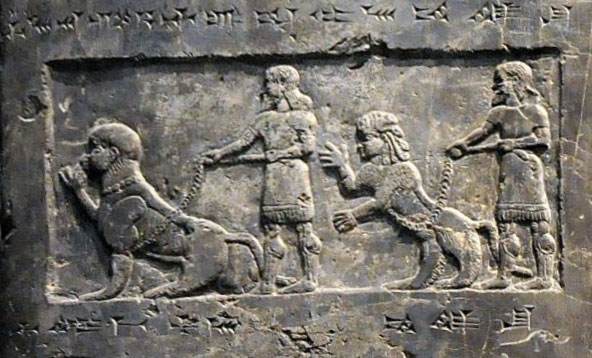
Egyptian tribute of human-animal hybrids, Black Obelisk of Shalmaneser III, Iraq, 825 BC
Osama Shukir Muhammed Amin (CCBYSA4.0)
See picture here: Goat/gazelle-human hybrid, Egyptian, 18th Dynasty, British Museum, London

Ram-headed hybrid figure, tomb of Thutmose III, 18th Dynasty
Jon Bodsworth (CC0)

Achilles and the centaur Chiron
Gustave Moreau (CC0)
A fragmentary copy of the apocryphal Book of Giants found among the Dead Sea Scrolls speaks of hybrids existing before the Flood 52. The Talmud says that before the Flood, animals were mating not only across species but also across genera, while humans ‘were mating with everyone’.53 Intriguingly, the oldest cave art ever found, in Sulawesi, Indonesia, shows human-animal hybrids hunting with spears and ropes.54
Northern folklore contains a strong echo of hybrids. The Fomorians (their name is thought to mean ‘Dark of the Sea’, ‘Under the Sea’ or ‘Sea Giants’) were a belligerent race of Irish mythological creatures said to have arrived in remote corners of north-west Ireland and Scotland after the Flood. According to the 11th-century Gaelic texts Lebor na huidre and Lebor Gabála, some had the body of a man and head of a goat, some had one eye, one arm and one leg – though a few were beautiful. Their rulers settled on Inis Vitrin – ‘Glass island’ – where they built a glass tower. Their giant King Balor had a ‘baneful’ or destructive eye: ‘This eye was opened only in the field of fight. Four persons were necessary to raise an eyelid of his eye by four polish rods passed through eyelids. The army which would look in this eye, could not resist, even if be in many thousands by number.’55 The Fomorians demanded huge tributes of children for their sacrifices, and were associated with plague and destruction.56 Misshapen hybrid incomers from an inundated land after a flood… pestilence… dark practices and child sacrifice – the aggressive world of the Fomorians sounds suspiciously like the savagery Osiris came across in Egypt.57

The Fomorians, John Duncan, 1912 (CC0)
Land and livestock
‘He instructed men in the sowing of corn and the growing of herbs… in the tilling of the ground… He it was who showed men the ways of the beasts of the field.’
‘Osireh taught the making of bread with gathered corn and sown corn. It was eaten at the floodwater feasts, with salt and with honey. For Osireh knew the nature of salt, which is of the bodies of men, and the nature of honey, which is of Heaven… He established the festivals of the new moon, the festival of wool drawing and the days of devotion’.
Osiris said, ‘The dove is the most sacred of birds and shall not be eaten…The milk of all beasts which do not have horns and part the hoof is not for the sustenance of man… to eat the flesh of swine is to eat something dedicated to the fathers of men and an abomination. Flesh of the ass shall not be eaten, for it diminishes the vigour of men… Any tree or bush bearing the food of men shall not be cut or broken… Slay no beast unless it be needed for food… ‘
Waterways, marsh-drainage
‘When Yosira had gone throughout the land and purified it… he taught those who dwelt there the making of waterways… and channels… He built Piseti in the midst of the reedlands and drained the swamps.’
Laws and record-keeping
Osiris taught his followers to read and write, and ordered his laws to be recorded: ‘Who taught men the secret of writing and numbers, and the measurement of the years? Who taught the ways of the days and the months, who read the meaning of clouds and the writing of the nightlights?’… ‘At this time he established those who were recorders of the days and seasons.’
Astronomy
Osiris ‘instructed them in the meanings of the heavenly signs.’ But it was the wise, later incomers from Zaidor/Poseida, the builders of the Great Sphinx, who were the greater astronomers – ‘The people who came with Nadhi [their leader?] were wise in the ways of the seasons and in the wisdom of the stars.’
Weaving, metalwork, pottery, stone-cutting
The Kolbrin lists several crafts taught by Yosira:
‘Yosira taught the people of Tewar the weaving of cloth and the working of metals, and showed them how to make tools and weapons of metal cast in a mysterious manner. But the secret of the sharp-edged weapons he revealed only to his own… He instructed men in the working of gold and silver and the making of vessels from clay… in the hewing and cutting of stone and the building of temples and cities… he raised up the first temple of brick and stone.’
‘“This shall be the law unto all those who work with metal, whether it be gold, silver or copper: One day in seven shall be a day of rest for the fires herewith the metals are wrought. On this day no fire will be lit and no metal touched or moved from its place. On the even of this day, all things of metal that have been made since the last day of rest shall be placed in a trough of sanctified oil, remaining there until their appointed time. Nothing shall go out from the workplace of a craftsman in metal until it has passed through the oil”.’
‘Yosira taught men to beat metal out of stones and to burn stones so that they gave up their heart.’ A later text reads: ‘Man twirls the drill in his hand, he is the master of fire, but the day comes when fire will leap forth from the heart of the stone and consume him’ – indicating that drilling was a skill used early on in ancient Egypt.58
Lens technology
The Kolbrin tells us that in Osiris’s lost homeland of Ramakui, ‘they used strange fire from the Netherworld which was but slightly separated from them… They made eye reflectors of glass stone, which cured the ills of men.’
Intriguingly, the eyes on some ancient Egyptian statues are fashioned in such a way that, like Leonardo da Vinci’s Mona Lisa, they seem to follow the onlooker round the room. In the late 1990s, the university optometrists Jay Enoch and Vasudevan Lakshminarayanan set out to discover the secret of these ‘moving’ eyes by analysing their component parts and creating a simulated model using the latest technology. Despite their efforts, the model did not perform as well as the Egyptian lenses. Enoch and Lakshminarayanan concluded that, given the astounding design complexity and performance of the ancient Egyptian eyes, the lenses used to create them at that early time were probably the latest in a long line of technological development.59
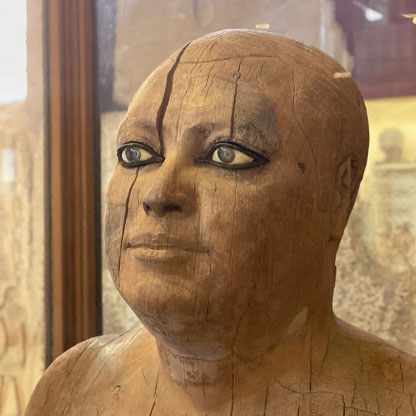
Statue of high-ranking official, Egyptian Museum, Cairo
Brad7753, (CCBYSA4.0)
What Osiris did not teach
‘The making of linen and the dying of cloth that forms garments ever pleasing to the eyes, he did not teach. Neither did he instruct them in the making of bricks or the working of copper.’ The Kolbrin does not reveal where these skills came from.
Command of the spirit world
The Kolbrin never speaks of Osiris as a merrymaker, nor does it describe him as a Dionysus/Bacchus-prototype, which is puzzling, since both Plutarch and Diodorus Siculus mention his love of dancing. The only Kolbrin instance of Osiris dancing is during his performance to save a sacrificial victim’s life (see Human Sacrifice above). Plutarch’s note that ‘he tamed mankind through persuasion and reasoning joined with songs of all kinds and music which he brought over’ might give a clue to what actually happened. Is it possible that all those memories of Osiris’s trance-inducing ritual dances to draw out spirits were misinterpreted over time as revelry?
Wallis-Budge includes an anecdote from 4th-Dynasty Egypt: ‘A high official called Ba-ur-tet brought from Punt a… pygmy who knew how to dance “the dance of the god” and was said to come from the “Land of the Spirits”… A text in the pyramid of Pepi I mentions the “pygmy of the dances of the god”… It is clear that ancient Egyptian kings were pleased to get possession of a pygmy who understood how to dance a particular kind of dance… associated with “the God”, who was surely Osiris.’60
Beer
Osiris ‘taught them how to brew drink which loosened the bonds from the tongues of men, so that Truth was no longer restrained. Elsewhere the Kolbrin says, ‘he taught them … the making of beer.’ Vines and wine are not mentioned.
Osiris the myth-maker
‘Who taught men the nature and knowledge of God, but in the years left to him could not bring them to understanding? Who, then, veiled the great secrets in simple tales which they could remember and in signs which would not be lost to their children’s children?’
These words indicate that Osiris created the first myths for people who, for whatever reasons, could not grasp abstract or spiritual thought.
Spiritual torchbearer
Osiris declared: ‘Behold the nature of man. Within him is a spark from the Divine Source and this is the Lord of the Body [the soul]. This alone is everlasting, this alone of man is his true self. This spark is enwrapped within a heavy mantle of matter… a covering of earthly clay. This spark alone is the seat of life, it alone has understanding and thought.’
‘Before the Gates of Heaven is the Land of the Horizon, whence go all who depart from their earthly body… Between Heaven and Earth, there is a great gulf across which the dwellers in Heaven may not return, but Earth is not wholly beyond their reach. Man receives, from the Place of Light, that which influences him for good, and from the Place of Darkness that which affects him for evil.’
‘I am the torchbearer running before the chairlitter of Truth. I come to reveal the greatness of men, to tell them of their immortal selves, of their spirits… Behold, I have given you the secret of immortality…’
The secret of immortality that Osiris spoke of was the ‘Hibsathy’ or ‘living resurrection’ ritual designed to remove fear of death.61 The Hibsathy ordeal demanded absolute commitment: ‘Seven years men being chosen waited and were called. Seven years they served and seven years they ministered at the feet of their Masters of Instruction. They were passed into bleak caverns to die and know God, and called forth with the sure knowledge of Truth.’ Special substances were taken to make this perilous near-death journey possible. Knowledge of the substances, says the Kolbrin, originated from Mesopotamia, from King Gilgamesh’s close male companion Enkidu, and were taken to Egypt by a young follower called Ancheti. (See my forthcoming article ‘Hurmanetar: the real King Gilgamesh’.)
But, says the Kolbrin, the Hibsathy proved too daunting a prospect for many. ‘Few entered the great chambers to die and to live. The temples were fine shells, but the kernel was dead inside. Men lacked the food of life. The True God was guarded and hidden by the false gods… Small places there were in olden times for all gods, the pillars were not yet stood up. The stones were not yet in their places and the House of Hidden Secrets was not yet in the land.’62
From this, it is clear that Osiris’s spiritual teachings did not spread widely in Egypt until long after his death.
Incidentally, it’s worth noting ‘The stones were not yet in their places and the House of Hidden Secrets was not yet in the land.’ Stylistically, these lines have a Sumerian grammatical structure even in translation.
Did Osiris travel the globe?
The Teachings of Yosira, Rule of Yosira, Way of Yosira and Tribulations of Yosira is dotted with unfamiliar place-names. Tamerua and Tewar/Tawara, both in Egypt, are identified above. One other place-name, Kambusis, might be connected to Cambyses/Kambojas, an ancient Indo-Iranian region in Central Asia.63 But other names – Homtree, Yankeb, Yapu, Roh, Haru, Harfanti, Habshasti, Hestabwis, Inta, Piseti, Mesiti – are not yet identified.
Diodorus Siculus writes: ‘the Egyptians say that their ancestors sent forth numerous colonies to many parts of the inhabited world … but since they offer no precise proof… for these statements… we have not thought that their accounts merited recording.’ Only when more of the Kolbrin’s skewed place-names have been cracked, will it be possible to discover whether Osiris did indeed travel far and wide outside Egypt introducing the arts of civilisation.
Neth
Judging by the Kolbrin records. Osiris had a rough ride in Egypt. The Children of Panheta, Harfanti and Kambusis, the People with No Name, the men of the Leopard, the false priests, charmers and those who conjured dark spirits resented his introducing changes not by force – something they understood – but with diplomacy, laws, curses and, as a last resort, magic. But the population as a whole adored him and never turned away from the great figure ‘who was with them before the first water channel was cut. He was not the god of the high born but of the lowly people.’
As they slowly emerged from chaos and began to grow crops and build homes, the people were ‘troubled by men who came out of the wilderness. These were a people ruled by women, and though the men were small in stature the women who ruled were tall and lean. Their only weapons were such as could be thrown from afar, but they had shields made of hide woven in a manner which caused anything coming against them to become entangled. Such were the men who came out of the wilderness and the wild places there. Strong men and hairy.’
‘The Queen of these people was not as the other women… she was good to look upon, besides being a great huntress. She was fairer than the other women, even more fair than the women of Egypt who put all others to shame. Her name was Neth and I know of no man who has knowledge of her father. Perhaps she was an Undying One who was always there, though I cannot believe there are any such beings. Yet even in these days there is a race of men beyond the mountains whose span of life is thrice that of other men.
‘I need not describe the manner in which Osireh went out to meet Neth and how his bow, the first bow seen in the land of Egypt, won her in contest… The bow Osireh gave Neth as a pledge is the same as that one upon which men still make oath and pledge their word.’
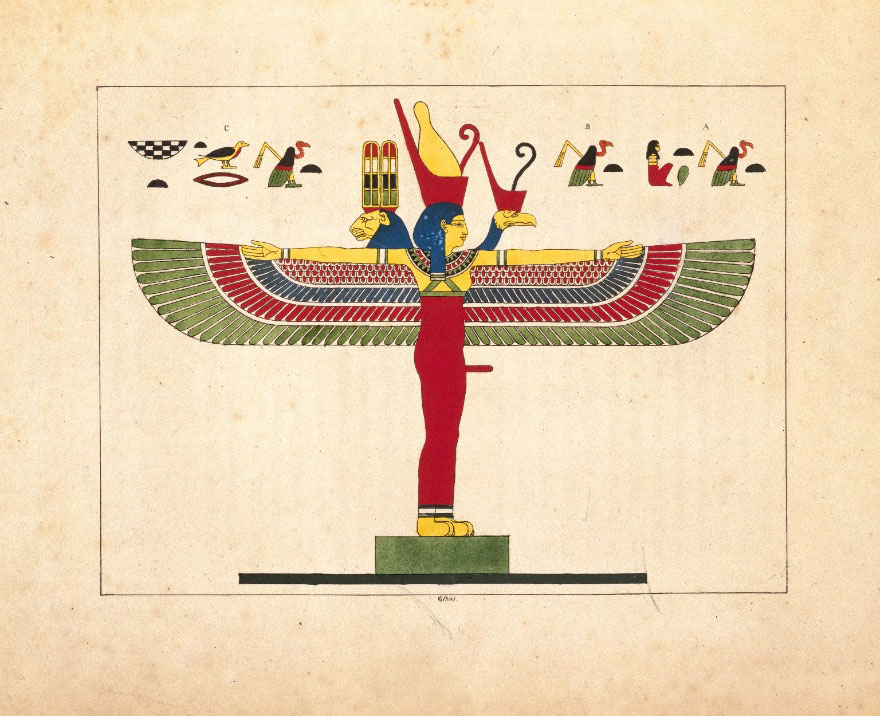
‘Neith Génératrice’, Panthéon égyptien, figures after drawings by M.L.J.J. Dubois
Champollion, Jean-François, 1790-1832. (CC0)
This text suggests that a matriarchal tribe was unusual. The image shown above portrays Neth the Divine Mother with an erect phallus. Neth and her fellow female rulers were a different species from the people they ruled. They were tall, lean huntresses – prototypes of the Amazon warriors in Greek mythology. It says much about the other women of the time that Neth was good to look upon. It also records her as being ‘fairer’ than others; the repetition of ‘fairer… fair’ as distinct from ‘good to look upon’ might mean that she was lighter-skinned than those she ruled. The fact that she was tall and could have been an ‘undying one’ points to her being of the much older species the Children of God, often referred to as ‘gods’ because of their extended lifespans.
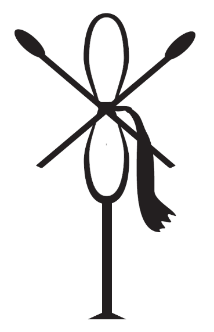
Emblem of Neith
Weneg (CCBYSA3.0DE)
What evidence is there for Neth? Nrt means ‘the terrifying one’ and Neith/Nit/Net/Neit was revered by the ancient Egyptians as the goddess of war and weaving, patron goddess of the Red Crown of Lower Egypt and the city of Zau/Sais in the Delta, creator of the world and mother of the sun, Ra.64 The Greco-Roman authors Plutarch and Proclus linked Neth with Sais and the goddess Isis, but this identification is long gone and nowadays, no-one associates the fierce huntress Neth with the numinous Isis.

Isis with Horus the Child, Walters Art Museum (CCBYSA3.0)
The Kolbrin goes on: ‘Osireh did not at once take Neth to wife and this is little understood, but it was a thing that could not be done in those days. At first, she was adopted by him as his sister, according to the custom. Later, men called her Esita, she being the same whom men call Esitis in these days…Then, it was ordained that Osireh should marry his sister, and Esitis gave birth to the manchild Hori. He is the same after whom the kings of Egypt, even in these days, take their title, for he was the first true Pharaoh, though others may disagree.’
This was clearly a diplomatic alliance. The Kolbrin records that Osiris brought a wife, several sons and blood kindred65 with him to Egypt, including a ‘true son, Manindu’. Manindu ‘commanded the Mesiti… men and workers in brass. They subdued the whole land, returning it to Yosira. Later it was delivered into the hands of Manindu whose seal is on it even yet.’ Osiris chose to follow local custom and adopt Neth as his sister before marrying her. When they married, her name was changed to Esitis (Isis), and together they had a son and heir, Hori (Horus).
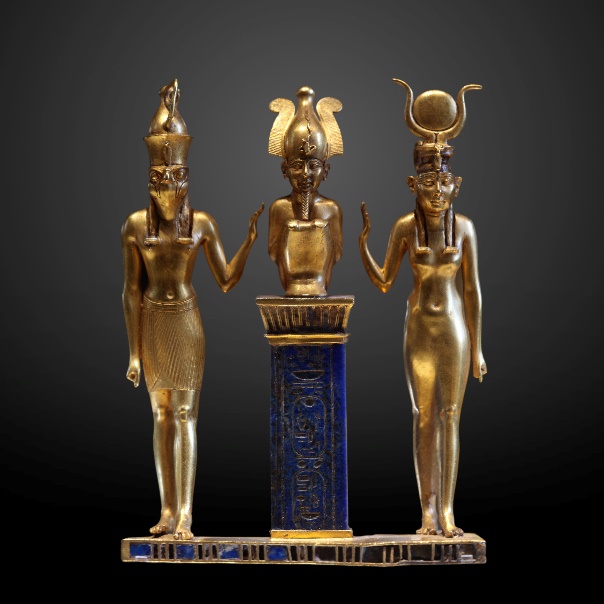
Horus, Osiris and Isis, 22nd Dynasty. Rama (CCBYSA2.0FR)
Pharaoh – a god below gods, a man above men
The Egyptian word pharaoh means ‘high house’ or ‘great house’. It is usually translated as ‘great house’ because ‘high house’ sounds odd to modern ears; but if the original line of pharaohs sprang from a union between the 15-foot Osiris and his tall consort Neth, ‘high house’ would have been appropriate for the home of their son Horus, the first pharaoh.
The Kolbrin records that ‘Osireh was sad, his heart was heavy for the people, he knew their nature and the ignorance of their ways. Therefore, he assigned a protector to be the guardian of the people, one who knew Truth, who was an Enlightened One, who was greatest among the Twice Born.’66
‘The leaders of the people came to Yosira desiring to make him their king… But… Yosira replied… “I am the mouth of the God of Gods and the light of my people. I will be the father of your king and the director of his footsteps, but your king I cannot be, for I am dedicated in service to the God of Gods”… Yosira then took his son [Horus], who was grown to manhood, and led him forth by the hand, giving him to the people to be their king.
‘This Appointed One was the King, the Pharaoh, the Light of God on Earth, the Viceregent of God over Men… His was the task to bring men the knowledge and awareness of divinity, and to preserve the special spirituality with which he was endowed in a select portion of one race. By his authority alone all places of worship should be built and kept… By his decree alone all canals should be cut, all waterways opened, all lands marked out and all war hosts raised. Under him all food should be gathered and stored, all men fed and every burial permitted…
‘Such was Pharaoh, a god below gods, a man above men… The family of Pharaoh were, in the first place, chosen by the Council of Light. In those days a few families were selected and some chosen from them to be carefully bred so that all the less desirable traits were excluded. Their aim… was to produce men and women perfect in goodness… They were a family, a race apart, trained wholly to govern in goodness. Every moment of their lives was to be devoted… to the elevation of mankind. They were taught to regard the people as their own children…’
It is evident that the Egyptian pharaohs were of a different bloodline from the general population and came from a few carefully selected families. This selection was carried out in order to preserve the ‘special spirituality’ with which the original Children of God had been endowed, much of which, the Kolbrin says, had been lost through mating with more primitive species67.
Osiris ordained that after death, the pharaohs ‘should be preserved, to keep such power bound to Earth for its good since ‘their bodies were filled with vitalised spirit essence [hokew/hike?]’.
To begin with, says the Kolbrin, the pharaonic selection process worked perfectly, ‘but… somewhere, down through the ages, the dam of spirituality sprang a leak and that which had hitherto been hoarded and guarded ebbed away. The divinity… became weakened, and when goodness diminished its opposite crept in.’ ‘Weakened’ is the clue here; it sounds as though, as a result of endless brother-sister marriages to perpetuate the pharaonic bloodline, incest gradually affected their DNA – as in the case of the profoundly epileptic and misshapen Akhenaten, of whom the Kolbrin says that his incestuous relationship with his daughter Meritaten resulted in their child Tutankhamen inheriting serious genetic weaknesses and living a short life.68
Horus
According to the Kolbrin, Horus’s life was far removed from his golden myth.
‘Hori was the staff of his father, but he could not bring the people to walk in the way of light… He ever exhorted the people to change their ways, but they stopped their ears to his voice… It is written of his efforts, “Hori brought lasting peace to the lands of water and sand, and to their peoples, he gave long life and prosperity. The bounty of the waters was theirs, but still… they declined the call to spiritual austerity and discipline… Thus… he brought before him the Council of Twenty-Four [a council formed earlier by his father Osiris] and said, “Go, speed on your way, send men through the length of the land, even unto the Three Peoples.”’69

Detail, statue of the hawkman Horus and Seth crowning Ramesses III, 12th century BC
A. Parrot (CC0)
The ‘Three Peoples’ are mentioned elsewhere as being (1) settlers from Ramakui (Osiris’s people) (2) immigrants from Zaidor/Poseida (the wise men who built the Great Pyramid) and (3) ‘men’ – human beings and the rest, which would have included hybrids – confirmation that different species co-existed in Egypt in pre-historic times.70
The account continues: ‘Say unto them: ‘Forsake the paths of evil… and cast down the shrines of false gods… If you stop your ears to my words… then the wrath of the Great God shall surely come down upon you and due punishment meted out by the waters.’
‘Punishment meted out by the waters’ indicates the threat of a flood. A possibly Sumerian account of the Flood appears in the Book of Gleanings71; in the more historical Egyptian texts of the Book of Manuscripts, the Flood is said to have happened after the unification of Upper and Lower Egypt: ‘Then came the year of the great flood of waters, though some say it was before these days when the salt seas rose upon the East and covered the land. Men were warned beforehand by the shortening of the days of the years, and the five days now added to the days of the year are days of sorrow for the alteration of things. It is said that seven days before the coming of the waters the sun appeared in a different quarter, but this is not easy to believe as the sun remains ever constant. The sailors of the king certainly departed for strange places during the chaos of waters, perhaps this was because the sun had left his steady course.72’
Back to Horus. ‘Thus spoke Hori, but his words were as good seed falling upon unwatered ground…Then he cried out… “O Great God, I have failed miserably in my task and the people still walk perversely in the ways of wickedness… The cities are steeped in iniquity… where men practise every kind of abomination… the bodies of men have become a lurking place for every kind of evil. O my God, where have I failed… what can I do?” ‘The Spirit of God responded… “My son, take not unto yourself the blame for the iniquity of these perverse people… Leave the wicked and gather the select few unto yourself, for thus it shall ever be… Hide the Sacred Mysteries in places where they shall be least sought. Choose well those who are of one thought with you… Yet the day is not far distant when many shall give ear to the words of wisdom… To you is given command of men, as he who fathered you is given command of spirits.’
What exactly was the pre-Flood wickedness and iniquity described here, which is echoed in the Book of Genesis? Generation by generation, human beings were changing. As a result of an artificially-engineered, more advanced species (the ’Children of God’) mating with less evolved hominids, their DNA was being diluted with more primitive DNA and producing offspring who were not only shorter-lived and smaller-sized, but whose behaviour was gradually getting more barbaric – more aggressive, more sexualized, less governed by thought and reason.
The much-abridged ‘Supplication of Horus’ below shows how much Judaism and Christianity have inherited from ancient Egypt. The Psalms and the Lord’s Prayer are filled with elements of Horus’s Supplication, and Christian prayers traditionally end with ‘Amen/Amun’ – ancient Egypt’s creator of all things.
‘O Ageless God of Aging Things.. no mere words of mine can hope to make known the gratitude welling up… within my heart. In the midst of my desolation, You brought me comfort, into the darkness of my spirit… You led me forth when the wilderness shut me, and guided my feet… When my enemies descended… You scattered the foe… You have magnified me in the eyes of the faithful… grant that the days allotted to us be days of peace and plenty. Show us yet more clearly the path of purity, that we fall not into the abyss of iniquity. In the vale of temptation let us not stray from the path of righteousness… When we stray, as oft men do, let not the force that brings us back onto the path afflict us too much. We acknowledge our weaknesses with humility and our failings with repentance… Forgive us our deeds of wickedness, pardon our transgressions… Give us… that which will benefit us the most spiritually… Everlasting glory is with You. Sanctity is Yours, therefore we honour You with submission and service… We, Your children, declare our love and loyalty.’
The record of Horus ends: ‘All things that God commanded, Hori did and when at last he lay in the arms of the Great Bride, he knew that the foundation for the Temple of Truth was well and truly laid…Hori died after the manner known [the text does say how] and was buried in glory. There is no recounting of his deeds. Then there was peace throughout all the lands beside the Nile and contentment reigned everywhere. Many great kings lived and ruled and gradually the Light of Truth was again revealed unto men.’
Maybe because no record survived of his human deeds, Horus was later seen less as a man, more as a mythological hawkman or hawk. He brought prosperity to Egypt but lived an unrewarding personal life, never convinced that he had lived up to the achievements of his phenomenal father.
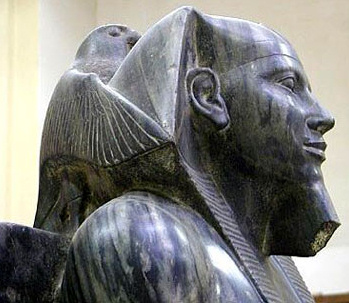
The Horus hawk protecting Pharaoh Khafre, funerary statue, Cairo Museum
Soutekh67 (CCBYSA4.0)
Osiris, Moses and Jesus
Wallis Budge suggested that the Christian biblical account of the flight into Egypt recorded in the apocryphal gospels was directly influenced by stories of Isis and Horus. The Book of Manuscripts goes further, describing elements of Osiris’s life which are later echoed in the Book of Exodus and in the New Testament gospels.
‘Osireh went up into the Sacred High Place and there learned the ordinances for the wellbeing of man. He was given the rules for safeguarding the Sacred Mysteries and he was also shown the workings of the Great Law. When he came down he chose the best of those about him and appointed the Council of Light, which numbered twenty-four’.
‘These are the words he spoke to them by the Sea of Death: “These are things to be explained to none but those with understanding and enlightenment. The Path of the True Way will be long and arduous, its trials and tribulations manifold and harsh… The Path of the True Way is one beset with the sharp stones of suffering and sorrow. The mortal flesh shall be torn by the sharp thorns of pain and tribulation.’
‘God says to Osireh, “Behold the land before you, it is a chosen land for safeguarding the Sacred Mysteries. Out of its womb shall come the Child of Truth, which shall die and rise again to lead men in the struggle to
glory. In the Day of his rising the Earth will be distressed and know it not. Nor will it open its arms to the Child, which will go unrecognised and even be despised and mocked. Yet, in that day will be produced a salve to heal the scars of mankind.’
Osiris, Moses, Jesus – the Old and New Testaments and the Kolbrin speak of a spiritual leader going up to a sacred high place on a mountain to receive ordinances from an unseen power above for the wellbeing of humankind. The Kolbrin’s mention of Osiris forming a Council of Light and addressing his chosen followers beside the Dead Sea is echoed so closely in the life of Jesus that it surely cannot be coincidence. And the prophesy concerning the ‘Child of Truth’ is a theme every Christian recognises, suggesting that the Osiris myth became diffused into all subsequent major religious faiths.
Death of Osiris
The Kolbrin account of Osiris and Neth says: ‘Esitis left her people, and Setis, her brother, ruled the People of the Sand Barrens, later gaining power over many of the People of the River. He… was great among men, he led them in the ways of men, the easy ways, along the wide road beloved by the multitude and followed so unthinkingly.’
‘There is no point in retelling here the accounts of the deeds of Osireh and Setis. Nor of how Osireh was betrayed by his blood brother, from whom he did not expect treachery, and slain at Nadit in Tawara. This was after he and those with him had been lured there and enclosed in battle. Though there had been much shedding of blood, Osireh still believed the best of men, but he was deceived. His body was dismembered and scattered so that none should worship at his shrine, but this only spread goodness throughout the land. When his body was united his spirit rose in greatness above all spirits. Setis was later slain by Hori and now awaits men in the Dawn Halls where he bids them sit patiently, passive and at rest. Hori, too, awaits men there, but he says, “Arise, O Glorious One, move and be active, for you are reborn.”’
This account with its mixture of events and mysticism seems to lie halfway between truth and myth. Since Horus was already full-grown when Osiris died, the story of Isis putting together her husband’s body parts in order to conceive was probably added later when the Osiris myth was accelerating towards juggernaut proportions.
Another Kolbrin text says simply: ‘He died in the manner of men, though his likeness is that of a god. Then they cut him apart, that his body might make fertile the fields, and took away his head, that it might bring them wisdom. His bones they did not paint red, for they were not as those of others.’ Another Kolbrin text runs: ‘It was he who brought fertility to the land… who died in the midst of the waters to give them life, and his life is in them still.’
The explanation of ritual dismemberment rings true, bearing in mind the practices of the people for whom Osiris made his laws and the ubiquitous custom of painting bones with red ochre. Tradition has it that the head of Osiris was kept and revered – which matches the Kolbrin account.
Long after the death of Osiris, a scribe called Kamushahre described Egypt as ‘the Land of Dawning on Earth’ – a phrase found elsewhere in the Kolbrin referring to the dimension beyond death73; in other words, Egypt was Heaven on Earth. From holes in the ground to family homes; from marshland to pastures and crops; from human sacrifice to recorded laws; from dark arts to the seeds of spirituality – Osiris and his people, survivors of a world torn apart by climatic and genetic disaster, came into The Land That Was Measured and ‘changed men as time changes trees’.
What a man. What a god.
What a legacy.
The author welcomes correspondence with readers via [email protected]
Kolbrin text courtesy of The Culdian Trust.
References
1 Few early images of him exist; during Egypt’s New Kingdom (1539–1075 BC) artists began producing Osiris statuettes on a grand scale.
2 On the Worship of Isis and Osiris, Plutarch
3 At the time Wallis Budge’s books were published, most scholars still clung to Flinders Petrie’s theory that ancient Egyptian culture had come from an invading dynastic race.
4 (see NBC’s video The Mystery of the Sphinx https://www.youtube.com/watch?v=5loDrMsMeBo)
5 Before the Pharaohs: Egypt’s Mysterious Prehistory, Edward F. Malkowski, Bear & Company, 2006)
6 See ‘The Three Lost Motherlands of Egypt’, Sacred and Scandalous Egypt, Yvonne Whiteman, 2021 https://www.amazon.co.uk/Unlocking-Mysterious-Kolbrin-Sacred-Scandalous-ebook/dp/B09GKVY2KM
7 Unlocking the Mysterious Kolbrin: Sacred and Scandalous Egypt, Yvonne Whiteman https://www.amazon.co.uk/Unlocking-Mysterious-Kolbrin-Sacred-Scandalous-ebook/dp/B09GKVY2KM
8 Gleanings 11—14
9 Scrolls 33:3-9
10 See ‘The Three Lost Motherlands of Egypt’, Sacred and Scandalous Egypt, Yvonne Whiteman, 2021 https://www.amazon.co.uk/Unlocking-Mysterious-Kolbrin-Sacred-Scandalous-ebook/dp/B09GKVY2KM
11 Man. 2:1-10
12 ‘Now this Osireh, of whom I speak, is even he whom the people of this land have made a god, for the Twice Born who have wisdom have let it be thus. Call him man or call him god, it is a matter of small importance, for the boundary between them is not impassable.’ Man 33:27
13 Man 33:11-35.
14 Man 33:36-46
15 See Unlocking the Mysterious Kolbrin: Sacred and Scandalous Egypt, Yvonne Whiteman https://www.amazon.co.uk/Unlocking-Mysterious-Kolbrin-Sacred-Scandalous-ebook/dp/B09GKVY2KM
16 Ibid.
18 Manuscripts The Annexed Scroll 1, 33:5
19 Manuscripts 6:16
20 . MANUSCRIPTS 33: 12-36? Did he come via India, or Babylon? See ‘The Three Lost Motherlands of Egypt’, Sacred and Scandalous Egypt, Yvonne Whiteman, 2021 https://www.amazon.co.uk/Unlocking-Mysterious-Kolbrin-Sacred-Scandalous-ebook/dp/B09GKVY2KM
21 See The Lost Civilisation Enigma, Philip Coppens (New Page Books, 2012), Livio Catullo Stecchini (1913-79) was Professor in Ancient history at what is now William Paterson University, New Jersey, USA.
22 British Museum, London
23 Dendera II, 100-101 (=Mariette, Dendera II, plate 33c).
25 ‘When Osiris Ruled on Earth’ https://www.osirisnet.net/dieux/osiris/e_osiris_04.htm
26 Manethon, Aegyptiaca, fgt 35-36; W.G. Waddell, Manetho, Loeb Classical Library, p.70-71,1940, reprint 1980.
27 S. Sauneron, ‘Les 7000 de Xoïs’, Villes et légendes d’Égypte, 2e ed., BdE 90, IFAO, Cairo, 1983, p.171-174.
28 Gleanings 2:1..
29 ‘Where we humans come from’ https://www.amazon.co.uk/Unlocking-Mysterious-Kolbrin-Genetic-Cataclysms-ebook/dp/B08FZTQSXG
30 Many giant bones have simply crumbled away soon after exposure to air; some have been spirited away by trophy-seekers; even more have been hidden away or wantonly destroyed by individuals and institutions who perceive them as unnatural and out of place in a post-Darwinian world.
31 https://www.worldliteraturetoday.org/blog/translation-tuesday/translating-gilgamesh-conversation-benjamin-foster
32 Youtube video The Denisovan Race of Giants could be the result of DNA Manipulation by Annunaki, https://www.youtube.com/watch?v=L3pkxWuUQ4M
33 Edfou VI, 109
34 Ägyptisches Museum, Berlin
35 Man 33:25
36 This appears in Monarquia Indiana, a survey of the indigenous peoples by Fray Juan de Torquemada, a 16th-century Franciscan missionary friar in Mexico, recorded in Atlantis: Mother of Empires, Robert B. Stacy-Judd, 1939.
37 Ancient Aliens, Season 10 https://www.youtube.com/watch?v=-tv8JtM4FzQ
38 The Mythical Origin of the Egyptian Temple, E.A.E. Reymond (Manchester University Press,1969)
39 https://www.sciencealert.com/humanity-thrived-amidst-the-deadliest-volcanic-eruption-in-2-million-years-mount-toba-supervolcano
40 Myth and Symbol in Ancient Egypt, Robert Thomas Rundle Clark (Thames and Hudson, 1978)
41 Finds in caves at Atapuerca, Spain and Chou-kou-tien near Peking, China, and in east and south Africa, Java and the Ardeche region of France show that hundreds of thousands of years ago humans killed and ate the brains of other humans for their protein and fat content.
42 (see Stephen S. Mehler’s The Land of Osiris: an introduction to Khemitology (Adventures Unlimited Press, 2001)
43 The ‘Land of the Dawning/Land of the Morning Light’ … are the lands beyond the veil, before the veil is the Land of the Living.’ The Kolbrin is referring here to another dimension which human beings once had the ability to penetrate, but which became closed to them as their DNA gradually weakened over generations.
44 ‘Nableh’ seems to refer to bacteria which turn food bad when air is allowed to penetrate.
45 ‘The Great Pyramid and its Builders: a Study of the Edgar Cayce Readings Regarding Early Egyptian History and the Great Pyramid, Lytle W. Robinson (Kessinger Publishing, 2010)
46 ‘Among the Children of God woman had equality with man, for her counsels were known to be wise… but among the Children of Men woman was … subject to man, an object for the satisfaction of his lust and the servant to supply his needs. He subdued her and kept her in servitude, for her betrayal of man was known even among them, and it was never forgotten, nor could it be forgiven.’ Gleanings 1
48 In the Book of Creation’s ‘Gardenplace’ story, the ‘Adam’ character finds himself surrounded by ‘the Sons of Bothas, not true men but Yoslings, kinsfolk to the beasts of the forest’. Were these an advanced species of hominid-ape? Later a cunning Yosling drugs and coerces the Adam’s grand-daughter in order to mate with her, thus starting the downward decline in DNA of the artificially-engineered group of humans to whom the Adam belonged. And at the beginning of the Book of Gleanings it says, ‘Once all men were dark and hairy and in those days woman was tempted by the strength and wildness of the beast which dwelt in the forest, and the race of man was defiled again.’
49 (ancient Greek theríon=mammalian beast, anthrōpos=human being)
50 See A History of the Japanese People from the Earliest Times to the End of the Meiji Era, Frank Brinkley and Dairoku Kikuchi (1915).
51 ‘The Great Pyramid and its Builders: a Study of the Edgar Cayce Readings Regarding Early Egyptian History and the Great Pyramid, Lytle W. Robinson
(Kessinger Publishing, 2010)
57 (Since I wrote this in November 2021, Erich von Daniken has aired a video suggesting that the Apis bulls entombed in the Serapeum at Saqqara were hybrids – an unnatural species created earlier by ‘the gods’ which the ancient Egyptians decided not to mummify, but instead to cover with bitumen and consign to oblivion in the heaviest of sarcophagi to prevent them ever resurrecting – https://www.youtube.com/watch?v=7LHa9i4gBFU.)
58 Book of Scrolls 33:13
59 Before the Pharaohs: Egypt’s Mysterious Prehistory, Edward F. Malkowski (Bear & Company, 2006)
60 Osiris and the Egyptian Resurrection, E.A. Wallis Budge (Dover Books, 1985)
61 See ‘Immortality: how Egypt regained the secret of the ages’, Secret and Scandalous Egypt https://www.amazon.co.uk/Unlocking-Mysterious-Kolbrin-Sacred-Scandalous-ebook/dp/B09GKVY2KM
62 The lines ‘The stones were not yet in their places and the House of Hidden Secrets was not yet in the land.’ have a stylistic Sumerian structure even in translation.
63 Cambyses I was king of Anshan in Iran from circa 580 to 559 BC and the father of Cyrus the Great (Cyrus II), younger son of Cyrus I. Cambyses II was King of Kings of Persia. https://www.name-doctor.com/name-kambuses-meaning-of-kambuses-49570.html
64 https://ancientegyptonline.co.uk/neith/make magic on magic not magic moment
65 ‘While Yosira was at Piseti, the priests stirred up the people against him, and so he fled to the Land of God with his sons and blood kindred. But his wife and youngest son did not go with him, for they were with her father in the land from whence the great river flowed.’
66 For more on the Enlightened Ones and the Twice Born see ‘Immortality: How Egypt Regained the Secret of the Ages’ https://www.amazon.co.uk/Unlocking-Mysterious-Kolbrin-Sacred-Scandalous-ebook/dp/B09GKVY2KM
67 See ‘Where we humans come from’ https://www.amazon.co.uk/Unlocking-Mysterious-Kolbrin-Genetic-Cataclysms-ebook/dp/B08FZTQSXG
68 See ‘King Akhenaten, Nefertiti and Tutankhamen’ and ‘The Pharaoh’s Folly at Amarna’. https://www.amazon.co.uk/Unlocking-Mysterious-Kolbrin-Sacred-Scandalous-ebook/dp/B09GKVY2KM
69 The ‘three peoples’ are mentioned elsewhere in the Kolbrin. They were those who came from Ramakui, those from Zaidor/Poseida and ‘men’, meaning human beings.
70 Manuscripts1:12
71 Gleanings 4:16-29
72 Manuscripts 34:4
73 Scrolls 1:28







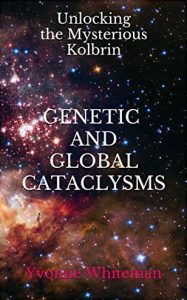



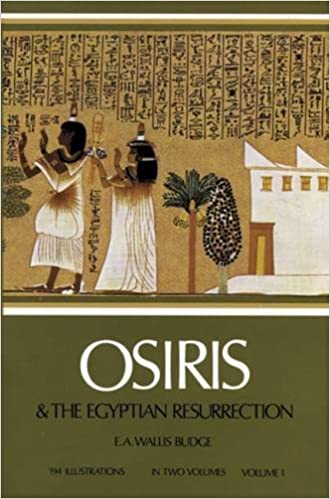
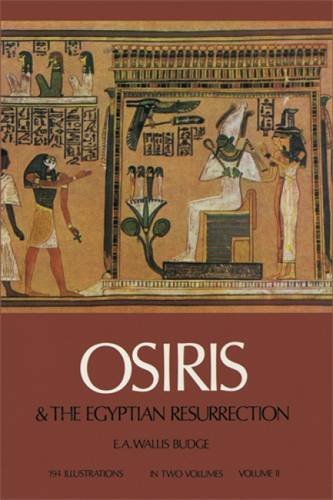

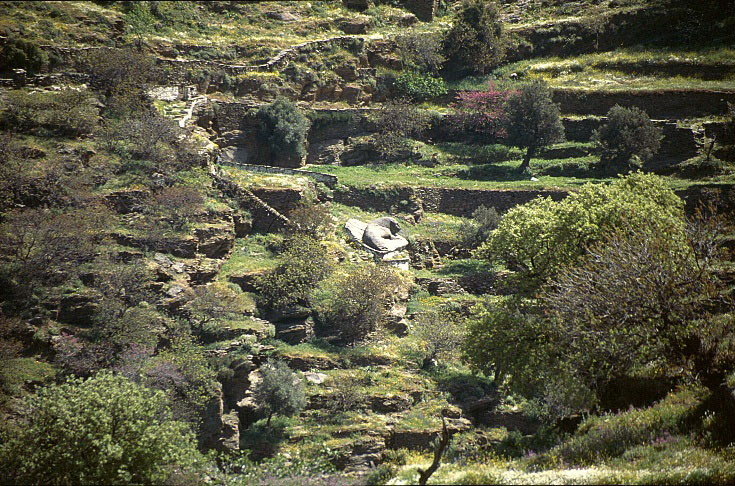
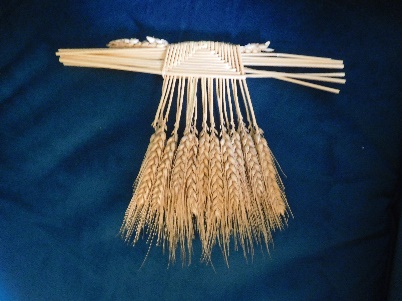
As always what delight to read your work Yvonne. It helps me in my own work tremendously and gives me a lot of food for thought. Where that might go, I am not entirely sure, but somewhere do all paths lead.
And as ever, may I point out that the strange world recorded in the Kolbrin purports to be fact, not fiction.
Fascinating and thought provoking. Thank you for sharing Yvonne!
Amazing analysis and a fascinating read, what a strange world Earth may have been back in the time of Osiris, thank you Yvonne!
So nice to see all these accounts of Osiris from Kolbrin gathered and analysed here, with some interesting connections made with other records and texts. I think Osiris definitely deserves our study and attention! Not sure if you watched the following video, but I think it interestingly puts Osiris in connection to other similar “wisdom bringers” who came to reestablish the civilization on the planet long time ago, after a devastating catastrophe: https://www.youtube.com/watch?v=UjDKVTWRloo
Thank you for your hard work Yvonne, hope more people will take up the study of this important text.
Thank you so much, Lucia, for sending me this link. I watched the video with great interest. I was delighted to see the Kolbrin referred to in the video as a serious source. That is precisely why I am writing – to try and show how important the Kolbrin’s core text is to our knowledge of the distant past.
It is very interesting to note that the natives of Easter Island refer to it as Rapa nui…….could they have been referring to Ramakui?